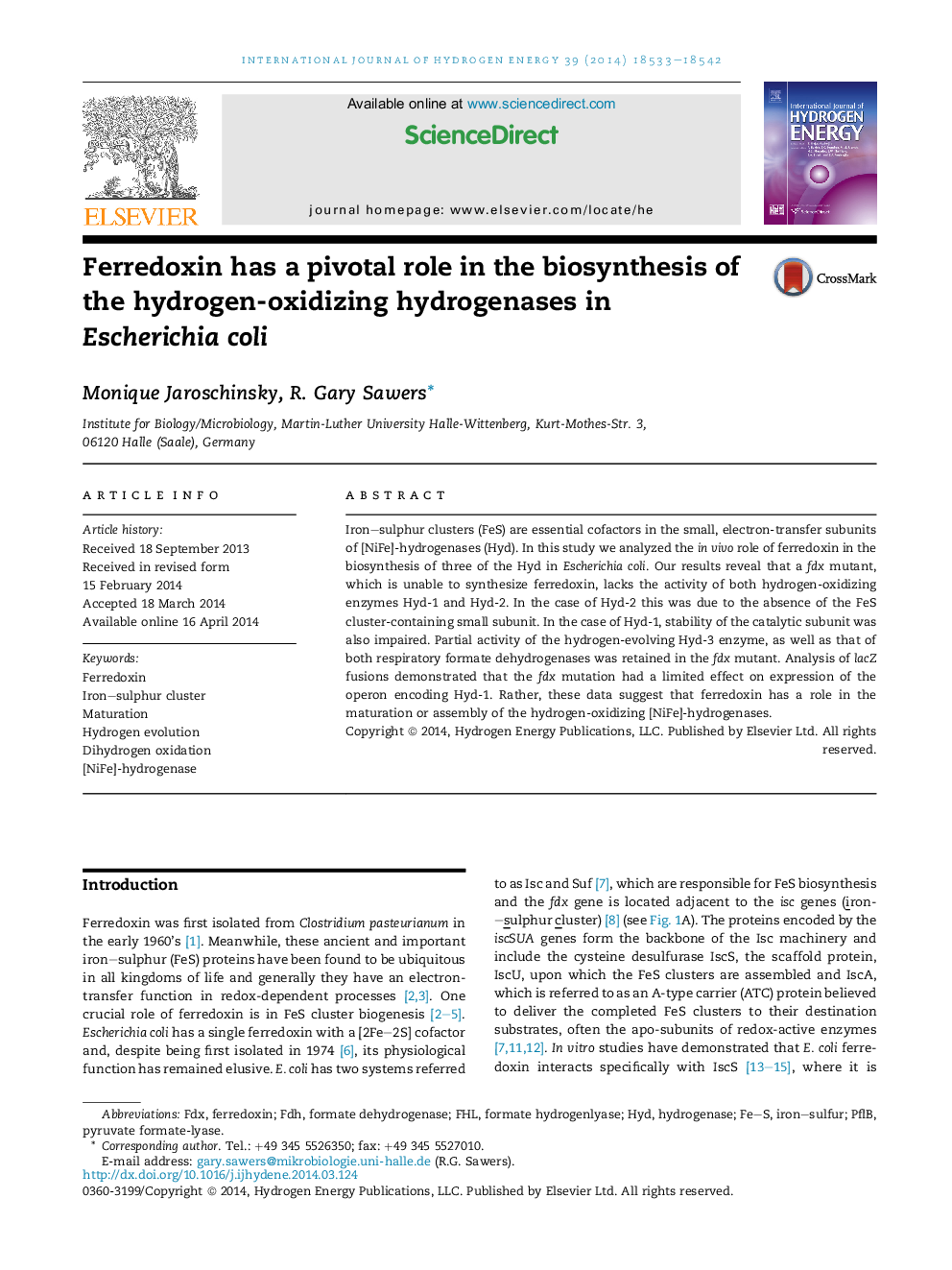| Article ID | Journal | Published Year | Pages | File Type |
|---|---|---|---|---|
| 1280864 | International Journal of Hydrogen Energy | 2014 | 10 Pages |
•Ferredoxin was shown to be required for hydrogen-oxidizing activity in Escherichia coli.•Hydrogenase 2 lacked a mature iron–sulphur cluster-containing small subunit.•The fdx mutant was impaired in Hyd-1 large subunit maturation and stability.•A fdx mutant could evolve H2 via a partially active formate hydrogenlyase complex.•Iron–sulphur cluster biogenesis and delivery to hydrogenases depends on ferredoxin.
Iron–sulphur clusters (FeS) are essential cofactors in the small, electron-transfer subunits of [NiFe]-hydrogenases (Hyd). In this study we analyzed the in vivo role of ferredoxin in the biosynthesis of three of the Hyd in Escherichia coli. Our results reveal that a fdx mutant, which is unable to synthesize ferredoxin, lacks the activity of both hydrogen-oxidizing enzymes Hyd-1 and Hyd-2. In the case of Hyd-2 this was due to the absence of the FeS cluster-containing small subunit. In the case of Hyd-1, stability of the catalytic subunit was also impaired. Partial activity of the hydrogen-evolving Hyd-3 enzyme, as well as that of both respiratory formate dehydrogenases was retained in the fdx mutant. Analysis of lacZ fusions demonstrated that the fdx mutation had a limited effect on expression of the operon encoding Hyd-1. Rather, these data suggest that ferredoxin has a role in the maturation or assembly of the hydrogen-oxidizing [NiFe]-hydrogenases.
